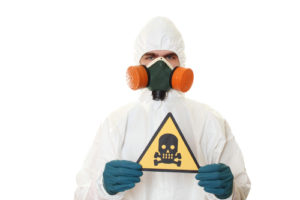How to Be Proactive in Your Office to Prevent a Mold Infestation

Prevent Mold in Your Office
Mold and fungus can grow inside walls, floors and HVAC systems for years without being detected. Over time, it can become so severe that it ends up causing health problems in those who are exposed to it. Taking steps to protect your office from mold is the most effective way to reduce this risk. You can do so in the following ways.
Health Concerns
Take any reports of health issues among employees seriously. If employees are experiencing respiratory problems that might be caused by mold, encourage them to see their doctor.
Water Problems
Watch for signs of water problems, such as leaks or dampness, and ask employees to let you know right away if they notice any. Other signs of potential water damage include stains and spots on walls and ceilings, peeling paint and buckling floors. Get rid of and replace any materials that have been damaged, such as carpeting or drywall.
Odors
Some types of mold give off a distinct odor, but others don’t. Have your building checked for mold if you or your employees notice a musty or unpleasant smell. Keep in mind that these odors could be coming from your ducts, so have your HVAC system and ductwork checked for mold if these smells are detected.
Indoor Environmental Quality Program
Set up a program that emphasizes the importance of indoor environmental quality in your building. This program should provide employees with information on detecting potential mold problems and reporting them.
If you suspect that there might be mold in your building, please contact Stern Mold. We provide mold and fungus treatment for businesses in NJ, NYC and Long Island.

 New York State has a new mold and fungus law that went into effect on January 1, 2016. The law identifies mold as a fungi growth that can produce toxins capable of causing pulmonary, respiratory, neurological or
New York State has a new mold and fungus law that went into effect on January 1, 2016. The law identifies mold as a fungi growth that can produce toxins capable of causing pulmonary, respiratory, neurological or 